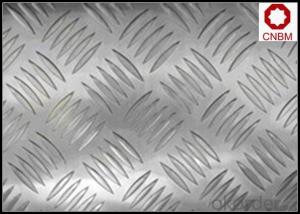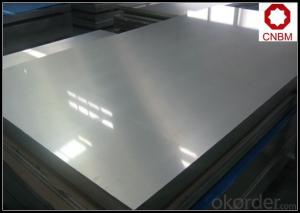Embossed Aluminum Coil/Strip 3003 for Curtain Wall
- Loading Port:
- Shanghai
- Payment Terms:
- TT OR LC
- Min Order Qty:
- 5 m.t.
- Supply Capability:
- 10000 m.t./month
OKorder Service Pledge
OKorder Financial Service
You Might Also Like
Item specifice
1. Specification of Embossed Aluminum Coil/Strip 3003 for Curtain Wall
1) Alloy | 1050, 1060,1100, 3003 3004 3105 3A21 5005 5052 etc |
2) Temper | O/H12/H14/H1/H18/H32/H34/H36/H38//H111/H112/H116/H321/T6/T651/T3/T351 etc |
3) Thickness | 0.1mm to 6mm |
4) Width | 20mm to 3300mm |
5) Coil weight | 100kgs to 6 tons depends on actual requirement |
6) Core material | Aluminum or paper |
7) Coil Inner diameter | 75mm, 150mm, 200mm, 300mm, 405mm, 505mm or as required |
8) Protective film can be added
2. Application of Embossed Aluminum Coil/Strip 3003 for Curtain Wall
(1).Interior: wall cladding, ceilings, bathrooms, kitchens and balconies, shutters, doors...
(2).Exterior: wall cladding, facades, roofing, canopies, tunnels,column covers , renovations...
(3).Advertisement: display platforms, signboards, fascia, shop fronts...
3. Feature of Embossed Aluminum Coil/Strip 3003 for Curtain Wall
*Such coil is specially designed to replace aluminum ingot, due to the high export tax of aluminum ingot, the coil has better price than ingot.
*This type of coil can fit customer's remelting furnace just like ingot, no need to make any change to the production line that was previously used for ingot. The standard coil size and weight is very suitable for the feed gate of furnace.
*This type of coil causes less material wastage than ingot when remelted.
*Our coil is made directly from ore, no need to go though the ingot making process, quality is much better than other suppliers who use ingot scrap to make coil.
Be free from Oil Stain, Dent, Inclusion, Scratches, Stain, Oxide Dicoloration, Breaks, Corrosion, Roll Marks, Dirt Streaks and other defect which will interfere with use
4. Certificate:
SGS and ROHS(if client request, paid by client), MTC(plant provided), Certificate of Origin(FORM A, FORM E, CO), Bureau Veritas and SGS (if client request, paid by client), CIQS certificate
5. Image of Embossed Aluminum Coil/Strip 3003 for Curtain Wall
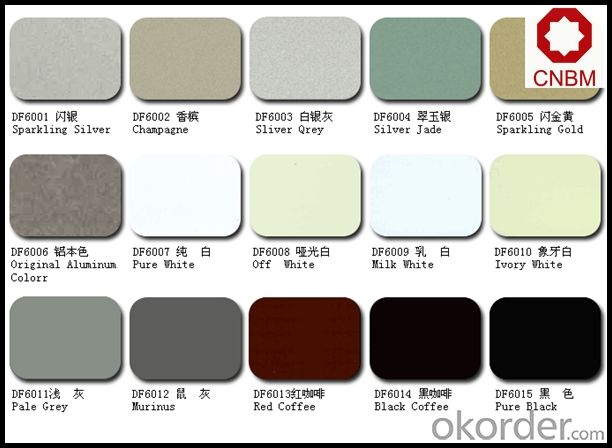
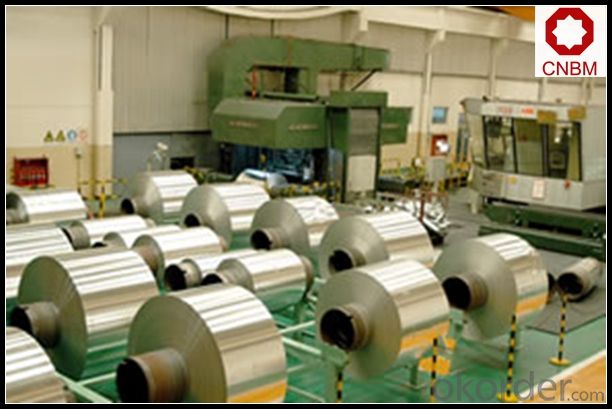
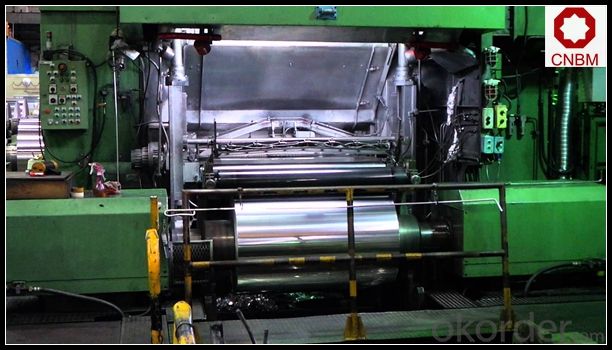
6. Package and shipping of Embossed Aluminum Coil/Strip 3003 for Curtain Wall
eye to wall
eye to the wall
with wood pallet (wooded case also available)
7. FAQ
1) What is the delivery time?
Dpends on actual order, around 20 to 35 days
2)What is the QC system:
We have QC staff of 20 persons and advanced equipment, each production is with MTC traced from Aluminum ingot lot.
3) What market do you mainly sell to?
Australia, America, Asia, Middle East, Western Europe, Africa etc
- Q:like we have seen a disk of aluminum spinning, and a permanent magnet repell the plate because apparently because of temporary hystersis and because the north or south field causes the same in the aluminum, so why wont a plate of ruby do the same thing? Are not all metals, crystals? Perhaps its just too big and difficult a question for you simple huumans,..eh?
- A synthetic ruby may be made of aluminum, but that is not ALL that it is made of. The primary material in all rubies is aluminum oxide. So you need oxygen. It's not like the stuff is hard to find... they probably don't even need to overtly add it when they manufacture rubies. And of course, that creates a world of difference. Ferric oxide (a.k.a. rust) isn't magnetic either, even though iron is very strongly so. Aluminum is NOT naturally magnetic (though I'm sure it can be induced)... but if the parallel holds one might imagine that aluminum oxide would be just as nonmagnetic as ferric oxide, neh? As for metals being crystals... yes, that is so. But keep in mind also that just because all metals are crystals, it doesn't mean that all crystals are metals. Metals are (by definition) malleable, ductile, lustrous, and conductive. None of these things can be said of ALL crystals. Ruby may be a crystal, but it is not even vaguely a metal.
- Q:What is the impact resistance of aluminum coils?
- The impact resistance of aluminum coils is generally high. Aluminum has a good strength-to-weight ratio and is known for its ability to withstand impact and deformation without breaking or fracturing easily. This makes aluminum coils suitable for various applications where resistance to impacts and mechanical stress is important, such as in construction, automotive, and aerospace industries.
- Q:Can aluminum coils be used in automotive heat shields?
- Yes, aluminum coils can be used in automotive heat shields. Aluminum is a commonly used material in the manufacturing of heat shields due to its excellent heat resistance and lightweight properties. Aluminum coils can be formed and shaped into the desired design, allowing for easy installation and customization in automotive applications. Additionally, aluminum has high thermal conductivity, which helps to dissipate heat effectively, making it an ideal choice for heat shields in vehicles.
- Q:Can aluminum coils be used in the production of aluminum siding?
- Aluminum siding production can indeed utilize aluminum coils. The manufacturing process of aluminum siding frequently incorporates aluminum coils due to their robustness, lightweight composition, and resistance to corrosion. Typically, these coils undergo processing via a coil coating line, where they receive a protective layer to enhance both functionality and visual appeal. After coating, the aluminum coils are shaped and molded into the desired siding panels, which can subsequently be employed in residential or commercial structures. Aluminum siding is highly favored for its minimal upkeep needs, long lifespan, and capacity to endure diverse weather conditions.
- Q:What is the maximum coil width available?
- The maximum coil width available varies depending on the specific application and industry. However, it can range from a few inches to several feet, depending on the capabilities of the coil processing equipment and the requirements of the customer.
- Q:What are the different types of aluminum alloys used for making coils?
- There are several different types of aluminum alloys that are commonly used for making coils. These alloys are specifically chosen for their unique properties and characteristics, which make them suitable for various applications. Some of the most widely used aluminum alloys for coils include: 1. Aluminum 1100: This alloy is pure aluminum and is known for its excellent corrosion resistance, high thermal conductivity, and good formability. It is often used in applications where high electrical conductivity is required, such as in transformers or electrical coils. 2. Aluminum 3003: This alloy is known for its moderate strength and excellent workability. It has good corrosion resistance and is often used in applications where formability and resistance to atmospheric corrosion are important, such as in condenser coils or evaporator coils for HVAC systems. 3. Aluminum 5052: This alloy is known for its high strength, excellent corrosion resistance, and good weldability. It is often used in applications where strength and resistance to saltwater corrosion are critical, such as in marine or offshore applications. 4. Aluminum 6061: This alloy is known for its high strength, good corrosion resistance, and excellent machinability. It is often used in applications where high strength and good weldability are required, such as in heat exchanger coils or automotive cooling coils. 5. Aluminum 7075: This alloy is known for its very high strength and excellent fatigue resistance. It is often used in applications where extreme strength and resistance to stress are crucial, such as in aircraft or aerospace components. These are just a few examples of the different types of aluminum alloys used for making coils. The specific alloy chosen depends on the requirements of the application, such as strength, corrosion resistance, formability, or electrical conductivity.
- Q:for purchasing aluminium are the grades to be mentioned
- Aluminum alloy designations are described by a 4-digit index system. The first digit indicates the alloy group according to the major alloying elements. 1XXX - 99% Al with no major alloying element. 2XXX – copper 3XXX – Manganese 4XXX – Silicon 5XXX – Magnesium and silicon 7XXX – Zinc 8XXX – other element Experimental alloy designations have an “X” prefix Aluminum temper designations (suffixes) describe heat-treatable and non heat-treatable alloys.
- Q:Are there any specific guidelines for the storage of aluminum coils?
- Yes, there are specific guidelines for the storage of aluminum coils. Aluminum coils should be stored in a dry, well-ventilated area to prevent moisture buildup and corrosion. They should be stacked horizontally on a level surface, with proper support to avoid deformation. Additionally, it is recommended to cover the coils with a protective material, such as plastic or cloth, to prevent dust, dirt, or other contaminants from accumulating on the surface.
- Q:What are the different coil coating technologies used for aluminum coils?
- There are several different coil coating technologies used for aluminum coils, each offering distinct advantages and suitability for specific applications. 1. Coil Coating with Liquid Coatings: This traditional method involves the application of liquid coatings onto aluminum coils. The coatings can be solvent-based or water-based and are typically applied using roll coating or spray coating techniques. Liquid coatings offer a wide range of color options, excellent chemical resistance, and good adhesion to the substrate. However, they may require longer drying times and can result in uneven coating thicknesses. 2. Coil Coating with Powder Coatings: Powder coatings are electrostatically applied onto aluminum coils in a dry powder form. The coated coils are then heated to melt and cure the powder, forming a tough and durable finish. Powder coatings offer excellent corrosion resistance, UV resistance, and impact resistance. They also have a high deposition efficiency, resulting in minimal waste. However, powder coatings may have limited color options compared to liquid coatings. 3. Coil Coating with PVDF (Polyvinylidene Fluoride) Coatings: PVDF coatings are a type of liquid coating that offers exceptional weatherability and durability. These coatings are known for their excellent resistance to fading, chalking, and chemical exposure. PVDF coatings are commonly used in architectural applications where long-term performance and color retention are crucial. They can be applied using roll coating or spray coating methods. 4. Coil Coating with Polyester Coatings: Polyester coatings are widely used in various industries due to their cost-effectiveness and versatility. These coatings offer good color retention, flexibility, and resistance to abrasion. Polyester coatings are available in a wide range of colors and textures, making them suitable for decorative applications. They can be applied using both liquid and powder coating methods. 5. Coil Coating with Polyurethane Coatings: Polyurethane coatings provide excellent adhesion, flexibility, and impact resistance. These coatings are commonly used in demanding applications where durability and resistance to harsh environments are required. Polyurethane coatings offer good color retention and can be applied using liquid coating techniques. In summary, the different coil coating technologies used for aluminum coils include liquid coatings, powder coatings, PVDF coatings, polyester coatings, and polyurethane coatings. The choice of coating technology depends on factors such as the desired performance characteristics, application requirements, and cost considerations.
- Q:What are the different coil slitting options available for aluminum coils?
- Aluminum coils can be slit in several ways to meet specific requirements and achieve desired outcomes. 1. The most common method is single-loop slitting, where the coil is fed through rotating circular knives to make a single cut along its length. This creates narrower coils with the desired width. 2. Double-loop slitting is similar to single-loop slitting, but the coil is passed through the circular knives twice, resulting in two narrower coils. This method is preferred when precise width tolerances are necessary. 3. Rotary slitting involves feeding the coil through rotating knives that make multiple cuts simultaneously. This allows for the production of numerous narrow strips in one pass, making it ideal for high-speed production. 4. Crush cutting utilizes opposing circular knives, with one stationary and the other rotating. The knives crush and shear the aluminum coil, providing precise slitting. This method is suitable for thin coils and applications that require minimal burr. 5. Shear slitting uses upper and lower straight knives to cut through the coil. The knives move in opposite directions, creating a shearing action that produces clean and accurate slits. This method is preferred for thicker coils. 6. Laser slitting is a modern and highly precise method that employs a laser beam to make cuts in the aluminum coil. It offers exceptional accuracy and clean edges, making it suitable for high-end applications with strict tolerances. Each of these coil slitting options possesses distinct advantages and is selected based on factors such as required width tolerances, coil thickness, production speed, and desired edge quality. Manufacturers choose the most appropriate method based on their specific needs and the characteristics of the aluminum coils they work with.
1. Manufacturer Overview |
|
|---|---|
| Location | |
| Year Established | |
| Annual Output Value | |
| Main Markets | |
| Company Certifications | |
2. Manufacturer Certificates |
|
|---|---|
| a) Certification Name | |
| Range | |
| Reference | |
| Validity Period | |
3. Manufacturer Capability |
|
|---|---|
| a)Trade Capacity | |
| Nearest Port | |
| Export Percentage | |
| No.of Employees in Trade Department | |
| Language Spoken: | |
| b)Factory Information | |
| Factory Size: | |
| No. of Production Lines | |
| Contract Manufacturing | |
| Product Price Range | |
Send your message to us
Embossed Aluminum Coil/Strip 3003 for Curtain Wall
- Loading Port:
- Shanghai
- Payment Terms:
- TT OR LC
- Min Order Qty:
- 5 m.t.
- Supply Capability:
- 10000 m.t./month
OKorder Service Pledge
OKorder Financial Service
Similar products
New products
Hot products
Hot Searches
Related keywords
